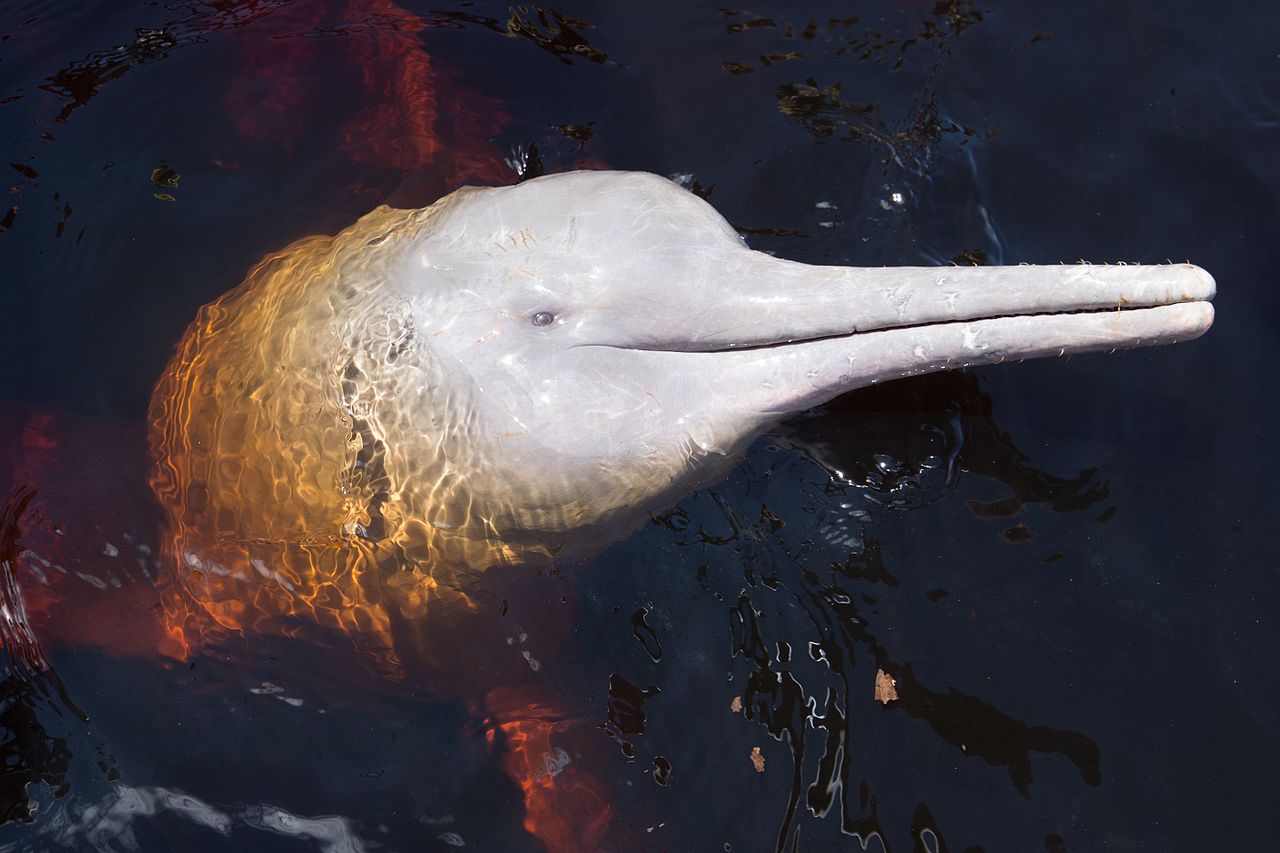The river pink dolphin of the Orinoco (Inia geoffrensis humboldtiana)
 The river pink dolphin (Inia geoffrensis), also known as the Amazon river dolphin or tonina, is a mammal of the Order Cetacea and Family Iniidae. There are three subspecies known: Inia geoffrensis geoffrensis, Inia geoffrensis humboldtiana and Inia geoffrensis boliviensis.
The river pink dolphin (Inia geoffrensis), also known as the Amazon river dolphin or tonina, is a mammal of the Order Cetacea and Family Iniidae. There are three subspecies known: Inia geoffrensis geoffrensis, Inia geoffrensis humboldtiana and Inia geoffrensis boliviensis.
It is a large river dolphin, with adult males reaching 185 kg in weight, and 2.5 m in length. Adults acquire a pink color, more prominent in males, and there is a marked sexual dimorphism between male and female, where males are longer and weighs more than females. They have a biosonar called melon.
Its dorsal fin is low in height but very long and its pectoral fins are also large. The fin size, unfused vertebrae, and its relative size allow for improved manoeuvrability when navigating flooded forests and capturing prey.
Its diet is based on about fifty-three different species of river fish, such as croakers, tetras and piranhas, as well as river turtles and freshwater crabs.
This dolphin lives in South America, in the basins of the Amazon river, in the case of the Inia geoffrensis geoffrensis, and the Orinoco river, in the subspecie Inia geoffrensis humboldtiana, and the Madeira river, for the Inia geoffrensis boliviensis, both always below 400 msnm. In the rainy seasons they move to areas of flooded forest where they find a greater diversity of food.
According to the IUCN Red List, the specie is maintained with Data Deficient, because the total population is unknown, as well as the impact of the threats. Although it has not been the victim of significant hunting, it has been suffering a progressive loss of its habitat, as well as accidental catches with fishing activities. Due to the striking color of their skin, some specimens have been captured for exhibition in aquariums, finding great difficulty in training them accompanied by a very high mortality when they live in captivity.